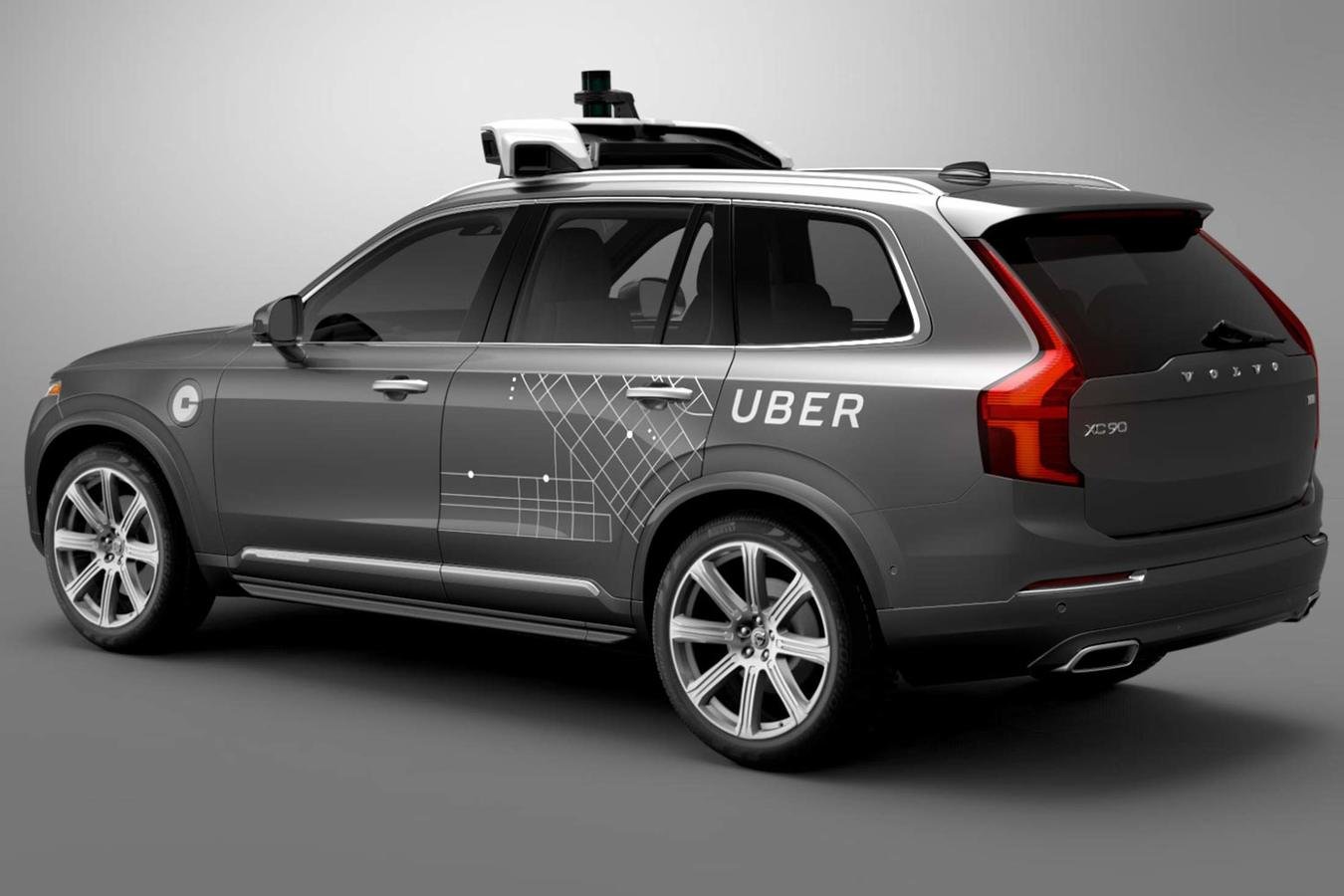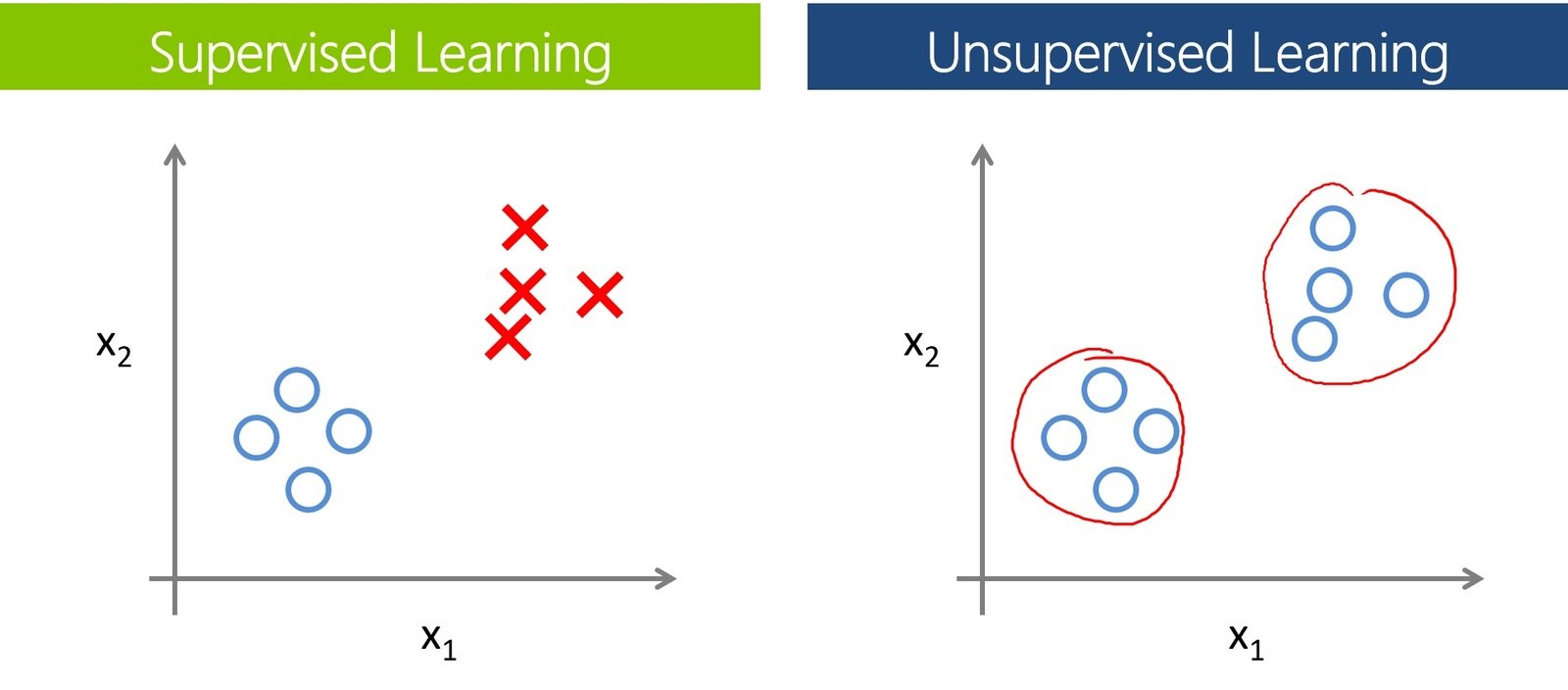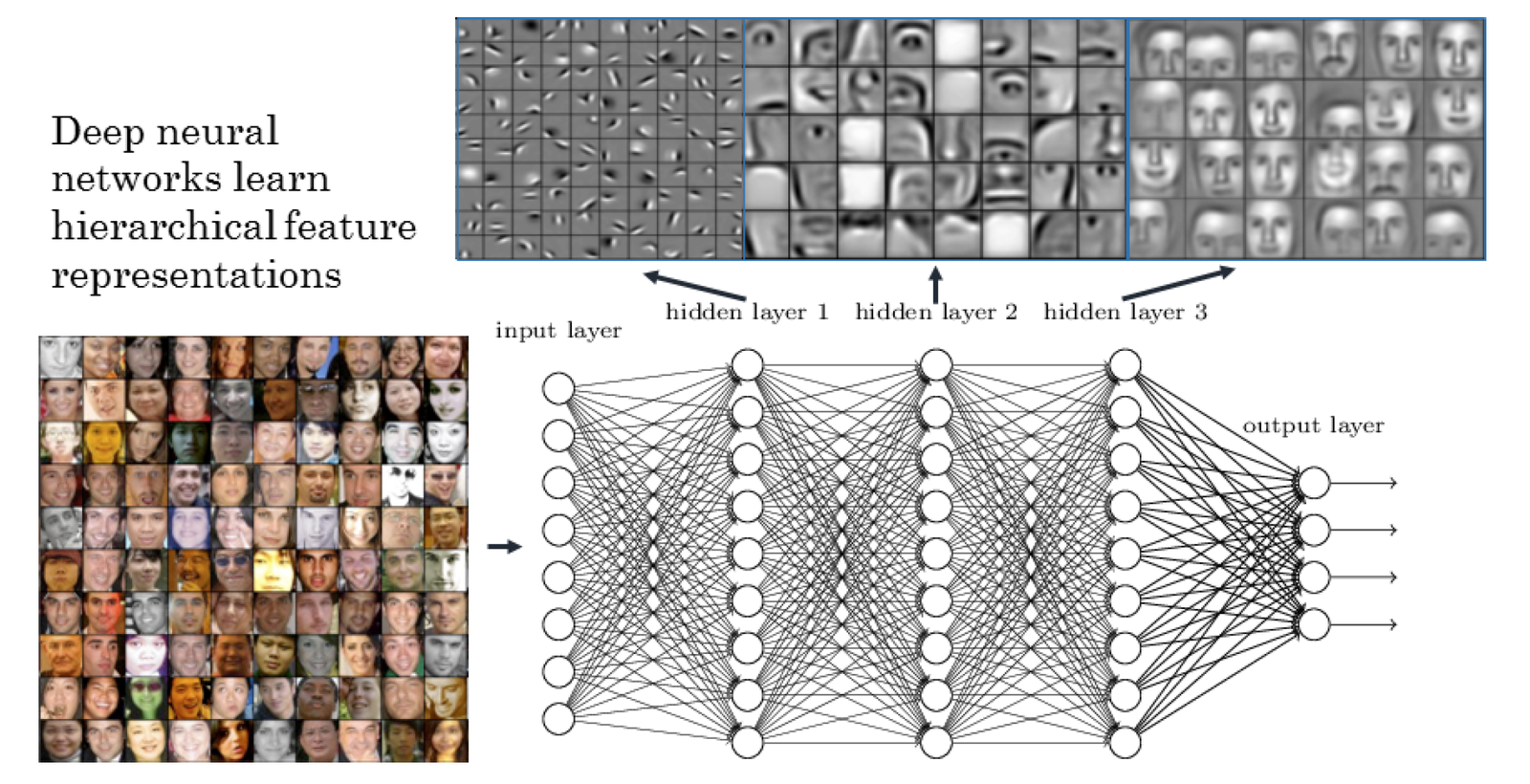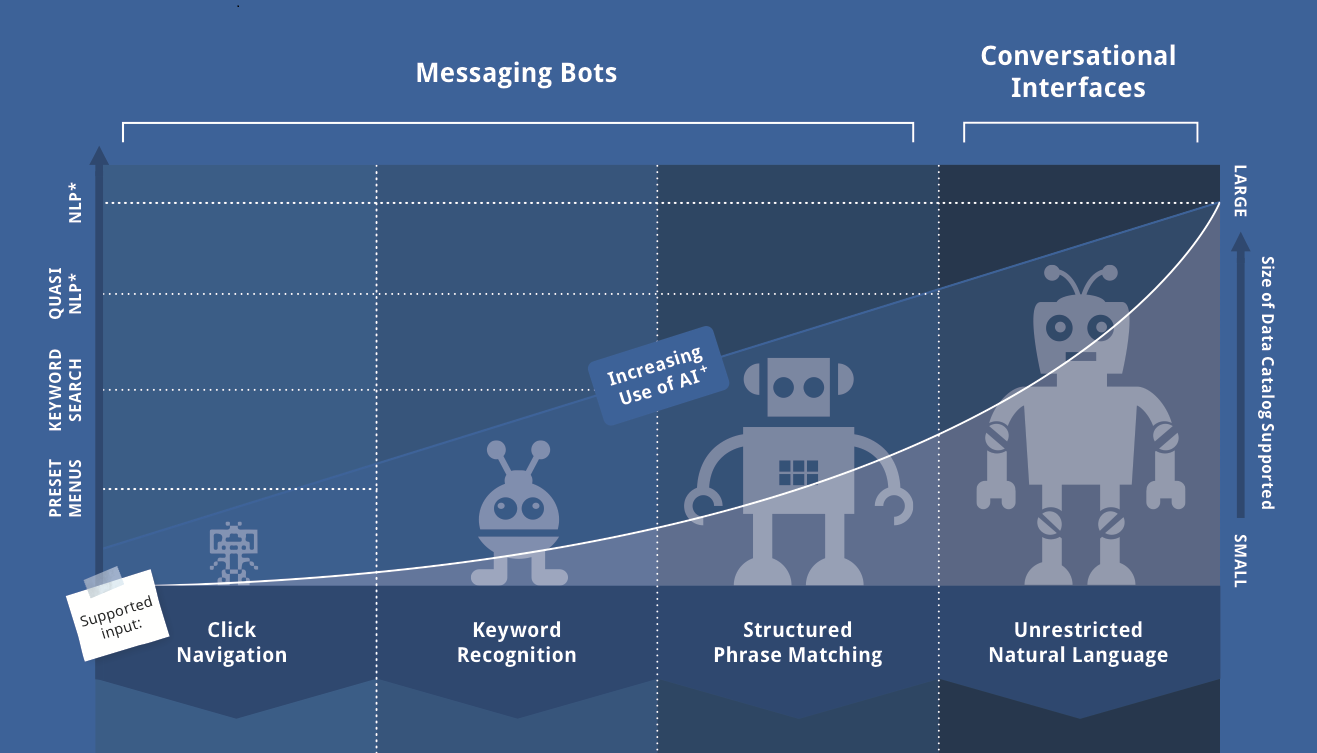Intro to Artificial Intelligence
October 2016, Stavros Vassos Helvia.io
(a very basic)
Intro to
(some part of)
Artificial Intelligence
Artificial Intelligence through some applications
Self-driving cars
Games: Go
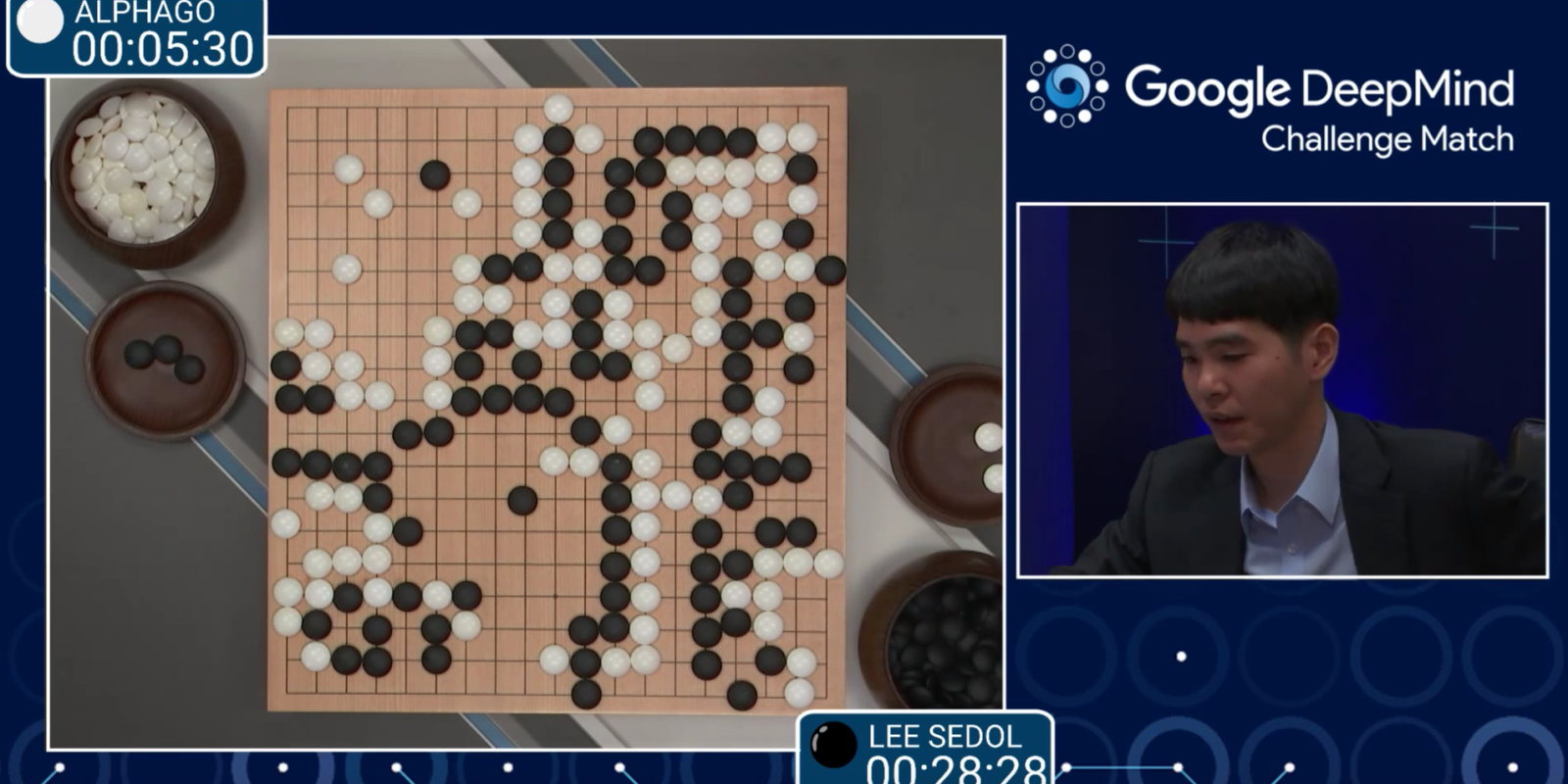
Games: Jeopardy
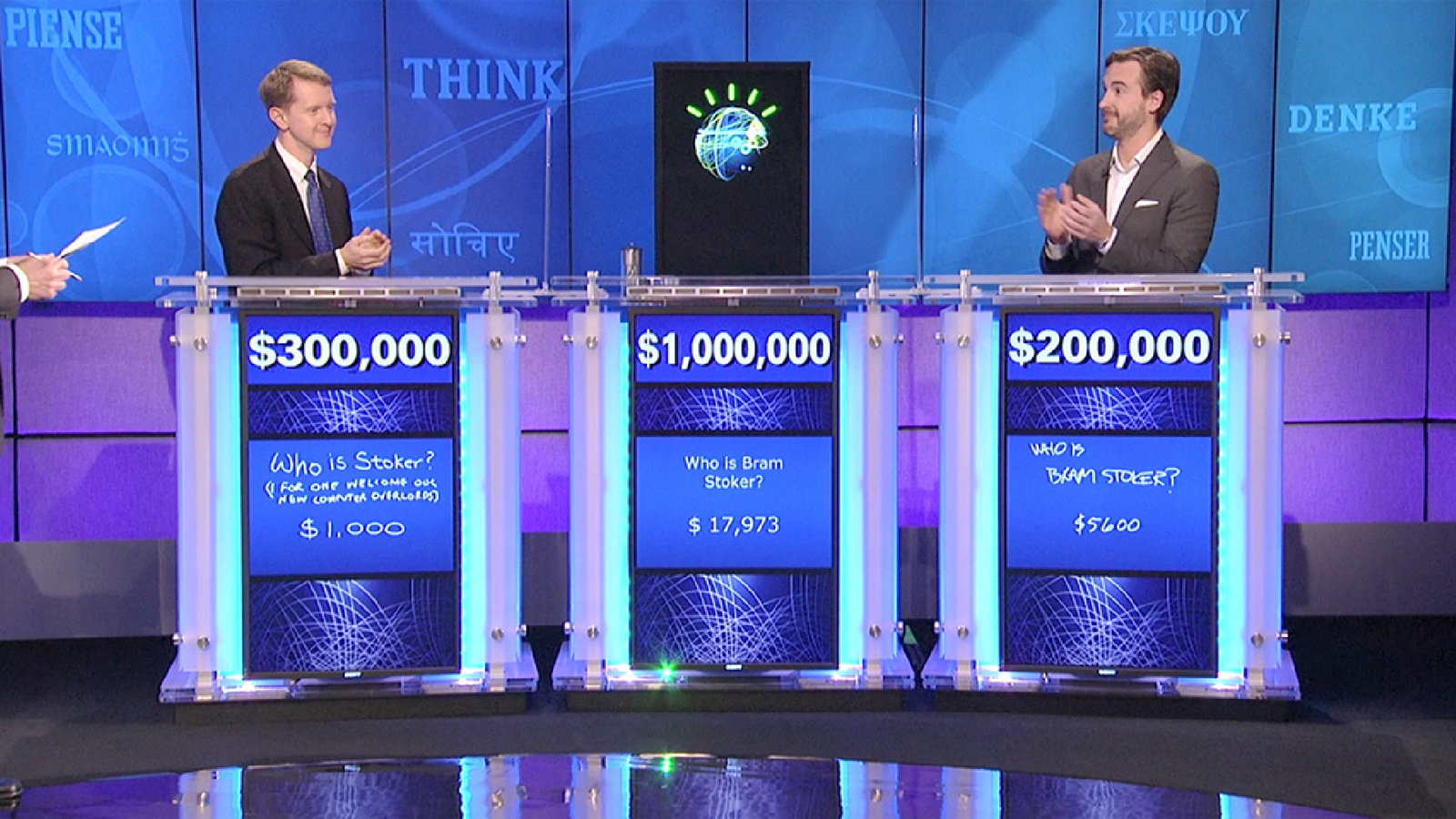
Movie recommendations
Predictive text

Artificial Intelligence through some applications
- Some cases are clear in our head that this is AI because we relate them with "thinking" abilities.
- Some cases are less exciting and we tend to not acknowledge AI behind them.
- E.g, in principle spam filtering uses similar AI techniques as some of the previous examples.
Artificial Intelligence through some applications
- Typically the exciting cases require a complex mix of methods from many subfields of AI and Data Science.
- In any case, many exciting results have been driven mostly by the recent advances Machine Learning.
- So let's go through some basic concepts and terminology!
Overview
- Machine Learning
- Classification
- Deep Learning
- Live experiment!
- More
Machine Learning
Machine Learning (ML)
- Arthur Samuel way back in 1959: “[Machine Learning is the] field of study that gives computers the ability to learn without being explicitly programmed.”
Programming vs ML
- What does it mean to program something explicitly?
- ML systems are programmed of course, but the way to achieve their functionality is not given by the programmer.
- For instance, an ML system detects cats in images; the programmer has not given "cat detection" rules.
- In contrast, the program that handles an ATM transaction has a very explicit and fixed rules.
Learning by example
- Ok, so what is learning and how it works?
- The programmer needs to give something to the ML system in order to program itself.
- And this is data, in particular lots of data!
- For instance, in an ML system detects cats in images; the programmer has not given "cat detection" rules.
- But the programmer gives a huge number of cat images so that the system can learn on its own!
Machine Learning (ML)
- We prepare a big dataset of instances of the problem we want to solve, e.g., lots of cat images.
- The ML system uses the dataset to train itself and create a model of problem we want to solve.
- Then the model can be used to predict the answer to new problem instances, e.g., is this new image a cat?
Un/Supervised ML
- There are two big categories depending on the dataset we provide (and different results we can get).
- Supervised learning: we go over the dataset and mark ourselves the right answer.
- Unsupervised learning: we give the dataset without hints and let the system figure out patterns.
Un/Supervised ML
- There are two big categories depending on the dataset we provide (and different results we can get).
- Supervised learning: we go over the dataset and mark ourselves the right answer.
- Unsupervised learning: we give the dataset without hints and let the system figure out patterns.
ML input/output?
- How do we actually give something as input to an ML system, e.g., a picture?
- What is the output we received?
- Let's see a specific class of problems and an example to make things more concrete.
Classification
Ice-cream example
- Here's a simple (silly but useful) scenario.
- We have data about how people eat their ice cream.
- In particular we know per person:
- how much time it took them to eat it;
- how much noise they were making while eating it;
- whether they are kids or not.
- We want to predict whether a new person is a kid based on their ice-cream eating behavior.
Dataset
- Let's make a training dataset for supervised ML:
- x1: time to eat the ice cream;
- x2: noise while eating the ice cream;
- we put an O if they are kids and X otherwise.
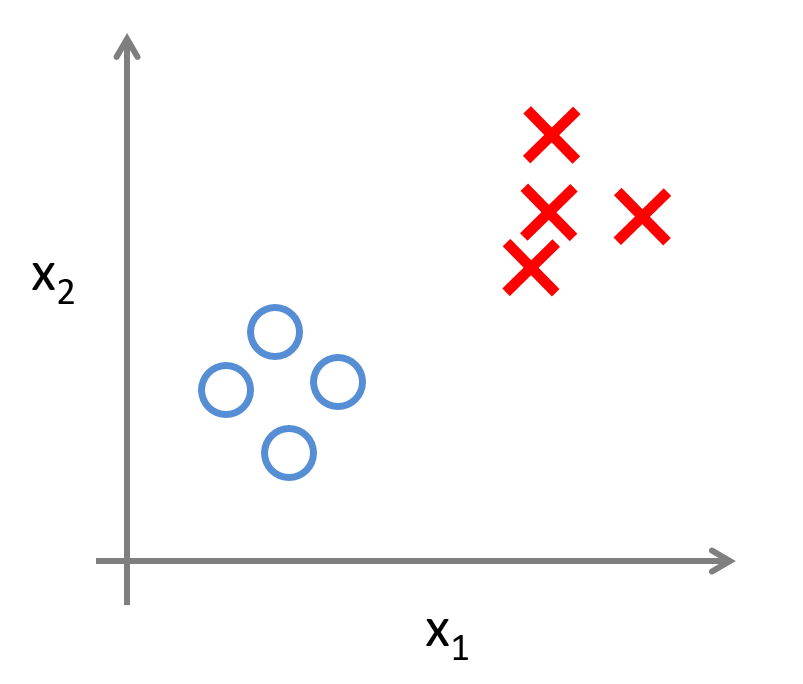
Model
- Let's assume we can separate the two classes of ice cream eaters using a simple linear function (model):

f(x_1,x_2) =
\begin{cases}
1, & \text{if}\ w_1 x_1 + w_2 x_2 + b > 0 \\
0, & \text{otherwise}
\end{cases}
Training
- In the training phase, the ML system looks into the labelled data and learns the parameters of the function so that when f=1 then the person is a kid.

f(x_1,x_2) =
\begin{cases}
1, & \text{if}\ w_1 x_1 + w_2 x_2 + b > 0 \\
0, & \text{otherwise}
\end{cases}
Training
- There is no single solution and the way to find one is numerical in the sense that we start with a random setting and update until it fits the data.

f(x_1,x_2) =
\begin{cases}
1, & \text{if}\ w_1 x_1 + w_2 x_2 + b > 0 \\
0, & \text{otherwise}
\end{cases}
Classification
- Now when we have information about a new person in terms of time and noise, the ML system can predict whether they are a kid.

f(x_1,x_2) =
\begin{cases}
1, & \text{if}\ w_1 x_1 + w_2 x_2 + b > 0 \\
0, & \text{otherwise}
\end{cases}
Classification
- We want an ML system to learn to identify kids based on their ice cream eating behavior (time, noise).
- We prepare a dataset with positive and negative examples (the Xs and the Os) and train an ML system to create a model for kid-ness.
- Then the model can be used to predict kid-ness.
Perceptron
- This simple method is a linear classifier called perceptron.
- The perceptron is trained using backpropagation.
- This essentially goes like this: we try out the labelled data, check the error and then go backwards tweaking the parameters to make the error smaller.
That was pretty easy
- Why did we have to do this with ML?
- Well, it's easy because we have just two inputs and it happened that the data is very well separated.

That was pretty easy
- What if we have 100s of inputs, e.g., the user rankings for all the movies they have seen?
- What if the data was like the this?
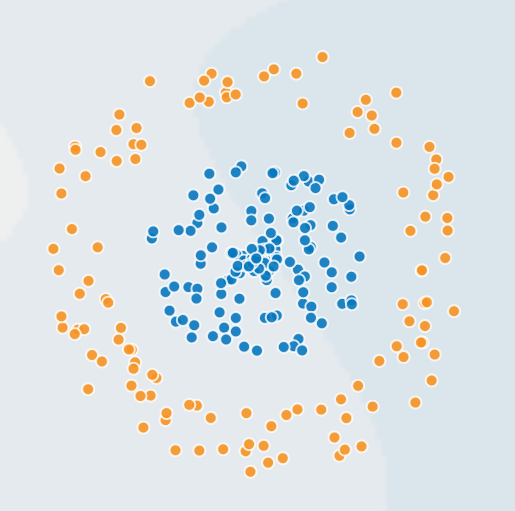
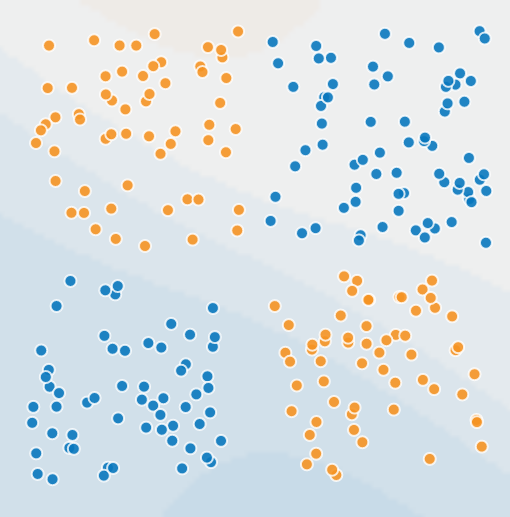
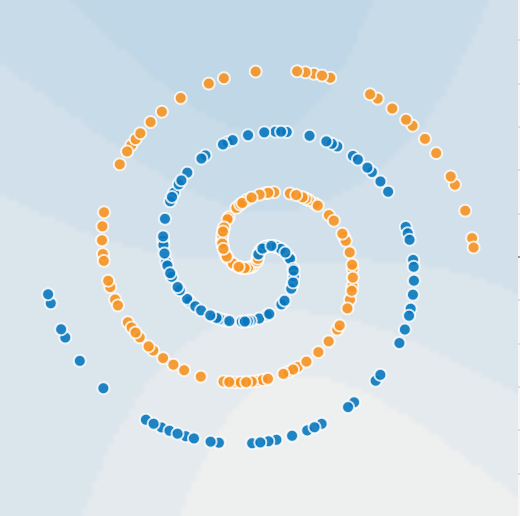
Deep Learning
Ice-cream example
- Consider a more tricky dataset like this:
- We cannot separate the two classes using a linear function like before.
- We could try different functions, e.g, a circle.

Neural Networks
- But the point is that we want the ML system to be flexible to "devise" it's own function (i.e., the model) in order to classify the data correctly.
- Neural Networks is a way to achieve this.
- Instead of writing down a bigger function, we can link together many simple functions.
- This is inspired by the neurons that are interconnected and trigger each other.
Neural Networks
- Let's link together many classifiers like the linear one and form a Neural Network!
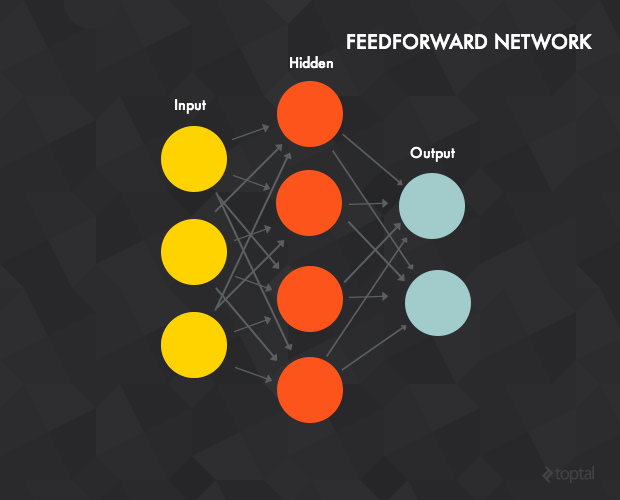
Input-Hidden-Output
- Input nodes on the left (one per input).
- Linear classifiers on the middle (as many as we want).
- Output nodes on the right (one per output).

Ice-cream example
- In the example before: 2 input nodes (noise,time), 1 hidden node (the linear classifier), 1 output (kid-ness) .
- The hidden node learned to identify kids.

Many inputs
- When there are many inputs (e.g., 100s of them),
each hidden node will learn a different aspect of the problem we try to solve.

High-level classifiers
- The output nodes will combine the information they get from the classifiers (hidden nodes) and work as more high-level classifiers to generate the answer.

Going deeper
- We can do this for many hidden layers.
- Each layer will work as if the previous hidden layer is the input it is trying to learn.
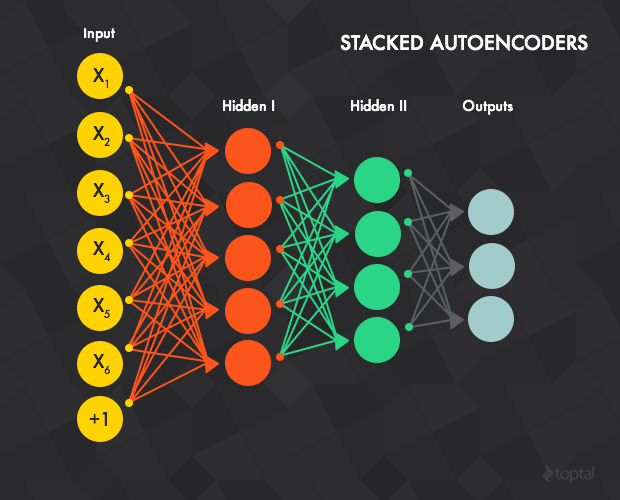
Deep Learning
- This is a Neural Network that is Deep.
- And we use the Machine Learning paradigm.
- This is where the name Deep Learning comes from.

Deep Learning
- The main idea is the same as in the case of f(x1,x2).
- Essentially, the whole Deep NN is a just one complicated function that can fit itself to the data.

Deep Learning
- Let's focus on the case of two inputs (x1, x2) and let's play with a visual tool to experiment with layers and nodes.

Live Experiment
NNs with Tensorflow
Overfitting

- You need to find the right balance in defining the function that fits in the training dataset
More
- Vision
- Games
- Text
Convolutional NNs
- Vision: exploit "local" relation of features in images.
Convolutional NNs
Reinforcement Learning
- Games: exploit "rules" to do learn by playing thousands of games alone or to itself as an opponent.
Recurrent NNs
- Text: exploit "temporal" relation between words.
- Generative models for many scenarios.
Recurrent NNs
- Text: exploit "temporal" relation between words.
- Generative models for many scenarios.
NLP + AI = Chatbots!
- Messaging apps as a uniform and familiar UI.
- Natural language as a new UI element.
AI is not only ML
- Knowledge representation
- Action languages
- Automated logical reasoning
- Verification
- ...
Takeaways
Applications?
- The range can be confusing.
- From analyzing item transactions that we mentioned in the beginning..
- ..to AI that we fear that it may one day rule the world!
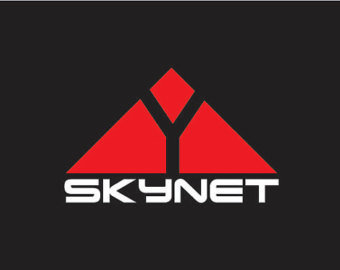
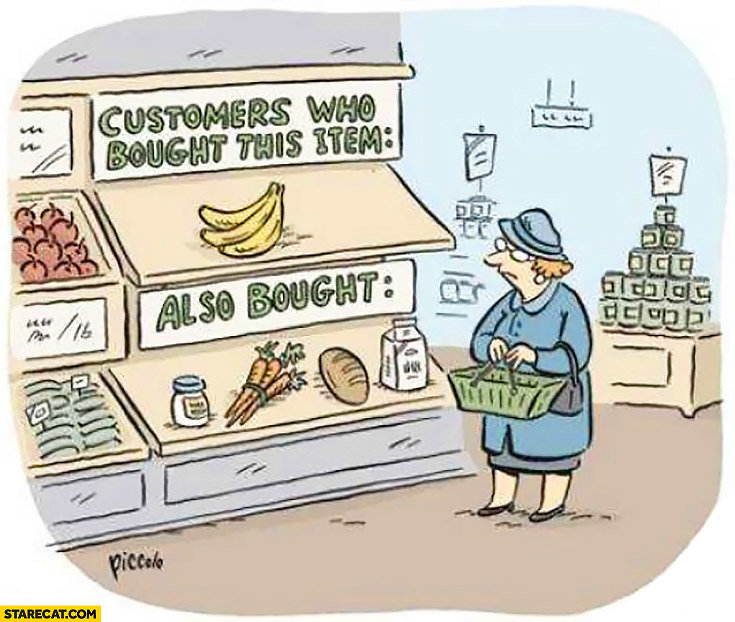
Applications?
- ML research and tools progress rapidly.
- Computing resources progress rapidly.
Applications?
- On the one side you can use "black box" methods for implementing "users who liked X also liked Y".
- On the other side you can expect that it is feasible to use lots of data to do problem solving of the form:
- "evaluate this situation based on inputs";
- "decide the best action based on inputs";
- "classify data into categories";
- combinations of all of the above.
It starts here
- There is a vast (vast) amount of information online.
- Here's some introductory tutorials on ML and DL.
- Machine Learning theory: An introductory primer.
-
An introduction to Deep Learning from
Perceptrons to Deep Networks. - Click on the slide images to go to relevant posts!
- Deep Learning Book
- Tensor programming tutorials with Python
- There is a big need for more practitioners to apply these methods in many domains.
Questions?
Some info: https://about.me/stavrosv
Email: stavros@helvia.io
Twitter: @stavros.vassos
